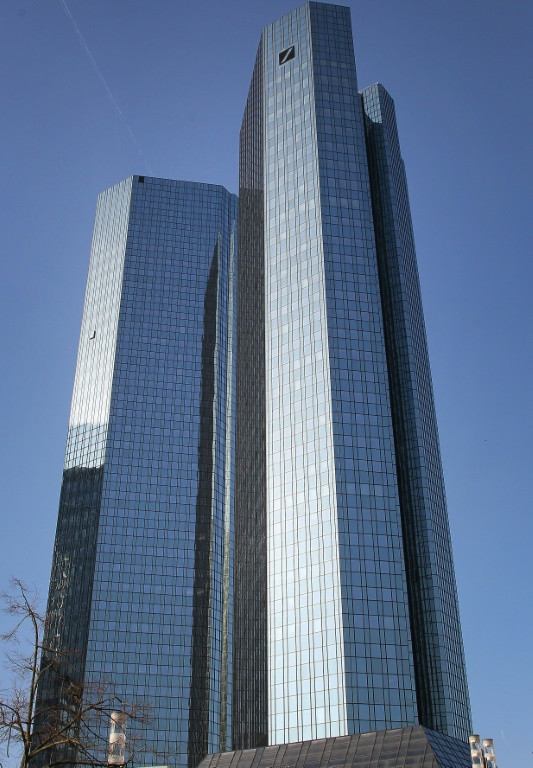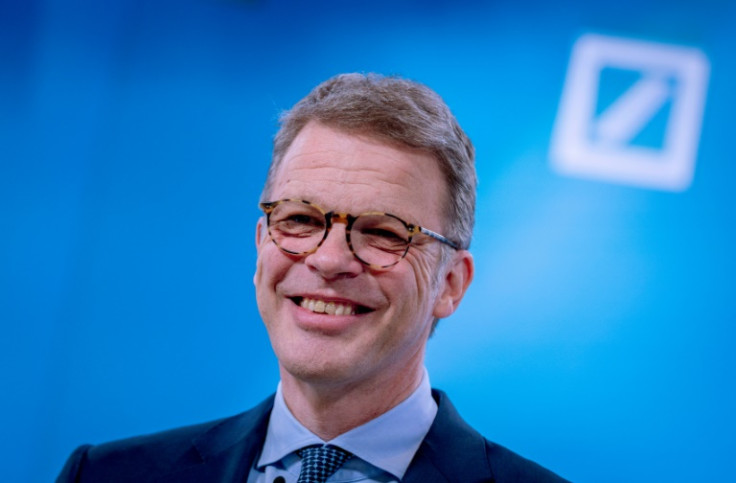After Battling Back To Health, Deutsche Bank Faces New Turbulence

Storied German lender Deutsche Bank had just been getting back on its feet after years of scandals -- but now faces new turbulence after its shares tanked Friday amid concerns of a widening banking sector crisis.
Here are five facts about the bank:
Deutsche Bank ranked as the eighth largest in Europe last year, with total assets of 1.3 trillion euros, according to S&P Global Market Intelligence.
The Frankfurt-headquartered group had close to 85,000 employees in 2022, about half of whom were overseas.
Founded in 1870, the bank for many years was a major financial backer for top German corporations as they expanded overseas, in sectors ranging from chemicals to electrical engineering.
Its strength helped it survive the 1931 banking crisis, triggered by inflation and the shutdown of international markets to German businesses.
At the end of the 1980s, Deutsche Bank shifted focus to trying to compete with American investment banks, making several acquisitions and developing a more risk-taking culture.
In the 1990s, under the leadership of Rolf Breuer, then from 2002 to 2012 with Josef Ackermann at the helm, Deutsche Bank sought to play in the same leagues as the giants of Wall Street.
But the bank's breakneck growth was not accompanied by careful oversight of what was happening with its operations on the ground, and it ended up being hit with myriad legal cases.
It faced allegations of money-laundering and other illegal practices.
It hit a nadir in early 2017 when it was fined $7.2 billion in the United States to settle lawsuits over its role in the "subprime" mortgage crisis, which contributed to the global financial crisis.
After repeated scandals stemming from its investment banking division, Deutsche Bank had to undertake two major restructuring drives before it really began to turn a corner.
The first came in May 2018 when newly installed chief executive Christian Sewing unveiled a plan to cut about 7,000 jobs.
In March 2019, preliminary talks were held with cross-town rival Commerzbank, which was also facing problems, on a possible merger -- but the plan was abandoned.
Then in July 2019, Deutsche Bank unveiled a second, more far-reaching restructuring plan -- 18,000 jobs were to be axed by 2022 and it would retreat from most share trading activities and refocus on its German and European business.
The new strategy largely paid off, with the bank reporting in 2022 its best profit for 15 years, more than double that of the previous year.
Its performance was underpinned by a seven percent rise in revenues to 27.2 billion euros, the highest since 2016.
Still, it has become a focus of investor concern during the latest banking crisis, triggered by turmoil in US regional lenders and the takeover of Credit Suisse.
Its shares tumbling as much as 14 percent on Friday as the cost of insuring against the bank defaulting on its debt jumped.
German authorities say the country's financial system remains stable, and Chancellor Olaf Scholz insisted Friday there was no reason to be worried about Deutsche Bank.
The lender "has modernised and organised the way it works. It's a very profitable bank. There is no reason to be concerned," he said after a summit of EU leaders in Brussels.
Sewing took the reins of the bank in April 2018, after massive falls in its share price and at a time markets remained sceptical the group could change course.
There were doubts he was the right person for the job -- he came from inside Deutsche Bank, had started out as an apprentice in one of the group's branches and had a background in retail banking.
But five years on, the CEO, now aged 52, has made been credited with driving a largely successful turnaround. His term was renewed earlier than scheduled in 2021, and now runs until 2026.
In the same year, he was appointed president of German private banking lobby, bolstering his clout in the German business and political worlds.

© Copyright AFP 2024. All rights reserved.




















